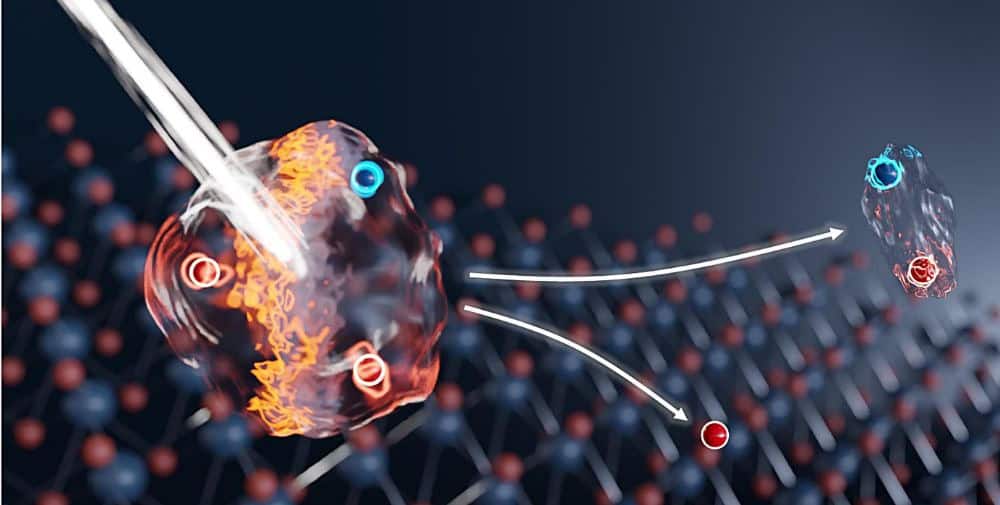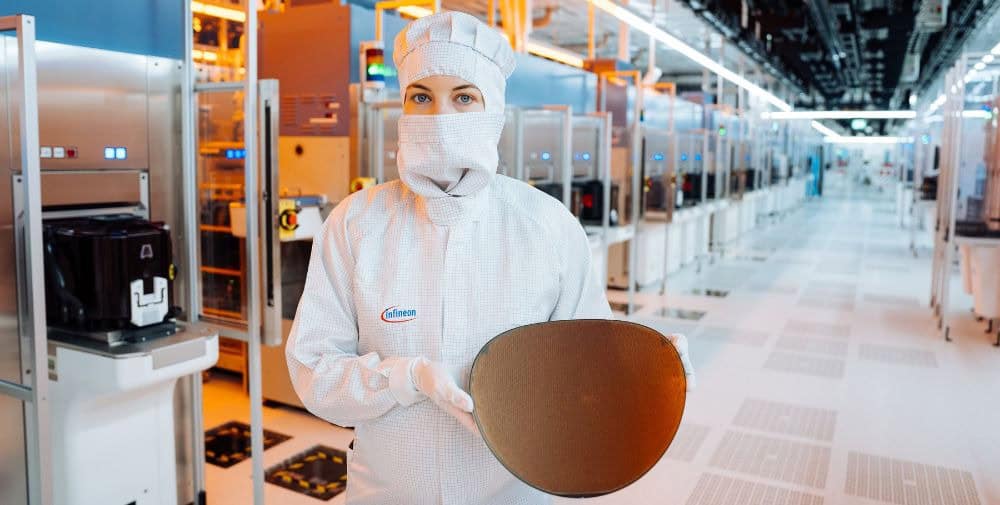
Two-dimensional semiconductors can exhibit fundamentally different properties compared to conventional bulk crystals. Among other things, it is easier to generate excitons in them: if an electron, which is known to be negatively charged, is excited in the material by adding energy, it can leave its original position. In doing so, it leaves behind a mobile charge – a positively charged “hole”. Both attract each other and together form an exciton, a kind of electronic pair. If another electron is in the vicinity, it is attracted to the pair to form a three-particle state – technically known as a trion. The special thing about the trion is the combination of electrical charge with strong light emission, which allows both electronic and optical control at the same time.
For some time now, experts have therefore seen the interplay between exciton and trion as a switching process that is both extremely exciting in itself and could allow interesting applications in the future. In fact, many laboratories have already succeeded in switching between the two states in a targeted manner – but so far with limited switching speeds. An international team led by Prof. Alexey Chernikov from TU Dresden and HZDR physicist Dr. Stephan Winnerl has now been able to significantly accelerate this switching. The work was carried out as part of the Würzburg-Dresden Cluster of Excellence “Complexity and Topology in Quantum Materials, ct.qmat”. Researchers from Marburg, Rome, Stockholm and Tsukuba were also involved.
First capture, then separation
The experts chose a special device at the HZDR for the experiment. The FELBE free-electron laser delivers intense terahertz pulses – a frequency range that lies between radio waves and infrared radiation. In their experiment, they first illuminated a single-atom, strongly cooled layer of molybdenum diselenide with pulsed light radiation. This light generated excitons in the wafer-thin material. As soon as they were created, the exciton pairs each captured one of the electrons, which were present in sufficient numbers in the 2D material – and thus became trions.
“When we then shot terahertz pulses at the material, the trions formed back into excitons extremely quickly,” describes Winnerl. “We were able to prove this because excitons and trions emitted different radiation in the near infrared.” The decisive factor in the experiment was that the terahertz pulses had the right frequency to break the weak bond between the exciton and electron – and so a pair consisting of just one electron and one hole was created again. Soon afterwards, this exciton captured another electron and became a trion again.
The separation itself took place at record speed. Within a few picoseconds – trillionths of a second – the bond was broken. “This is almost a thousand times faster than was previously possible with purely electronic methods and can be generated with terahertz radiation if required,” emphasizes TU researcher Chernikov. The new method offers interesting prospects for research. The next step could be to extend the demonstrated processes to a variety of complex electronic states and material platforms. Unusual quantum states of matter, which arise from the interaction of many particles, would thus come within reach, as would applications at room temperature.
Prospects for data processing and sensor technology
The result could also make technical applications possible in the future, for example in sensor technology or optical data processing “It would be conceivable to use the effect as the basis for new types of modulators that can switch faster,” explains Winnerl. “In combination with the ultra-thin crystals, this could be used to develop components that are both extremely compact and capable of electronically controlling optically encoded information.”
Another field of application would be in the detection of technologically important terahertz radiation, including imaging processes. “With the new switching processes in atomically thin semiconductors, it may be possible in the long term to develop detectors that work in the terahertz range, are adjustable in a wide frequency range and could be realized as terahertz cameras with many pixels,” estimates Chernikov. “Ultimately, a comparatively low intensity should also be sufficient to trigger the switching process.” When switching from trion to exciton, the emitted light changes in the near infrared range. Detecting this and converting it into images would be fairly simple and could be achieved using proven technology.
Publication
T. Venanzi, M. Cuccu, R. Perea-Causin, X. Sun, S. Brem, D. Erkensten, T. Taniguchi, K. Watanabe, E. Malic, M. Helm, S. Winnerl, A. Chernikov: Ultrafast switching of trions in 2D materials by terahertz photons, in Nature Photonics, 2024 (10.1038/s41566-024-01512-0)
Contact
Prof. Dr. Alexey Chernikov
Institute of Applied Physics | Dresden University of Technology
Würzburg-Dresden Cluster of Excellence ct.qmat
Tel.: +49 351 463-36439
Email: alexey.chernikov@tu-dresden.de
Dr. Stephan Winnerl
Institute of Ion Beam Physics and Materials Research at the HZDR
Tel.: +49 351 260-3522
E-mail: s.winnerl@hzdr.de
– – – – – –
Further links
👉 www.hzdr.de
Photo: Giuseppe Meneghini




